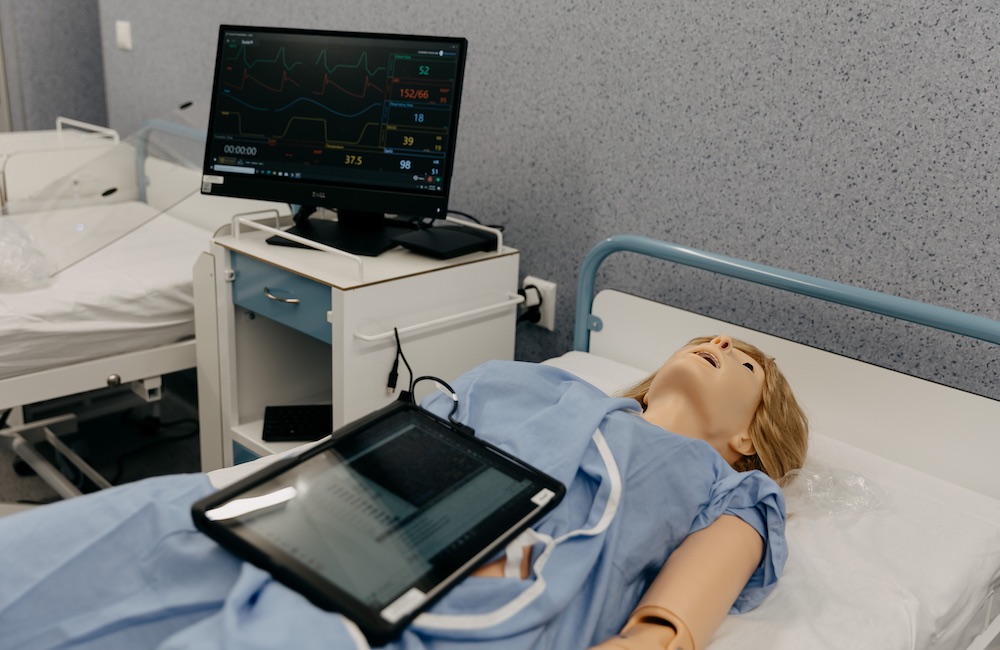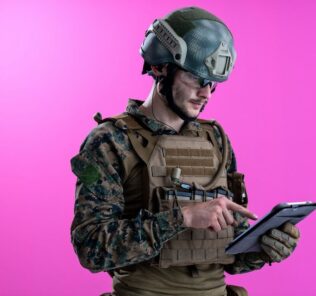Getting Started With Inter-Professional Patient Simulation
Health career learners, now more than ever, must be equipped with inter-professional skills to prepare for the transition to practice. Despite the impetus to enhance teamwork and collaboration at the patient bedside, many patient simulations operate with learners from only one health profession represented. Creating Interprofessional Education (IPE), aka interdisciplinary education, opportunities can appear daunting at first, but helpful resources do exist. The Interprofessional Education Collaborative (IPEC) has established Core Competencies for Interprofessional Collaborative Practice (which include having shared values and mutual respect, understanding roles and responsibilities of various professions, team-based communication to improve health outcomes for patients and families, and working in teams to plan, deliver, and evaluate care). This article looks at ways to simply develop IPE into clinical simulation experiences based on these competencies.
Role Play Can Miss the Objective
One method commonly used during patient simulation scenarios is to have a learner “play the role” of another profession. While this appears to be a good way to begin, learning objectives can be missed. Learners at any level of experience may find role portrayal of another profession difficult and often rely on stereotypes to overcome the knowledge deficit. Attempts to mitigate this problem require so much faculty time and effort to script participant roles that IPE scenarios ultimately lack true and spontaneous problem solving, teamwork, or communication.
Sponsored Content:
When learners focus on their own role, IPE learning objectives can be developed to encourage specific opportunities to demonstrate spontaneous clinical communication and problem-solving. Certainly, any representation of other professions can add some value to healthcare simulation experiences. In the absence of genuine input and participation from other professionals, many faculty and simulationists may find it more beneficial for themselves to play that role than to assign that role to an inexperienced learner.
Start Small and Find Common Ground
In contrast to random role-playing, clinical faculty could start small and build a simple scenario in which learners from two professions work together to accomplish a few basic and common learning objectives, such as effective communication and maintaining patient safety during a stressful unexpected patient event. RN learners caring for a patient with several tubes and lines could need a portable chest x-ray to be performed by Radiologic Technology learners in your center.
Learners would have to work together to determine the safest position for the patient while obtaining the best image. The critical event could be sudden respiratory distress or tube disconnection. During this critical medical event, learners must communicate effectively and provide safe patient care while responding to this emergency.
Sponsored Content:
Another example would be a code response scenario in which there are two or three roles participating. physician assistant learners become the core team leaders, RN learners administer meds and perform compressions and defibrillation, and respiratory therapy learners intubate and perform ventilation. This scenario particularly lends itself to addressing the team and teamwork core competency.
Watch this Recorded HealthySimulation.com Webinar:
Fostering Interprofessional Skills Through Virtual Healthcare Simulation
Establishing Shared Objectives
Establishing shared objectives that pertain to each profession involved is a good place to start. Determining one or two core competencies to be addressed is manageable and will guide the scenario development. Understanding each other’s roles and responsibilities, and effective team communication are two examples.
Understanding roles and responsibilities can begin during the simulation pre-brief with faculty-guided learner discussion. As the scenario unfolds and again during debrief, examples of good role interactions and opportunities for improvement can be reviewed. Likewise, principles of effective communication could be presented in pre-brief, during a presenting event in the scenario, and then reviewed in debrief.
Team-based communication can be practiced in a format that is common in the setting in which learners will eventually work, ISBAR for example. RN or pharmacology learners could report an issue to a provider (a PA learner for instance), and receive new patient care orders. Any misunderstandings or communication difficulties can be discussed in debrief.
Early Involvement of Faculty from Various Disciplines is Important
Involving stakeholders early in the creation of the plan helps ensure everyone has agreed on shared objectives. Everyone must be aware of and agrees to the timeline that includes pre-brief and debriefs and not only the scenario itself. This discussion between learners of different professions is one of the most valuable opportunities for learning.
Early involvement of key stakeholders is important in order to minimize scheduling conflicts. This, in my experience, has been the most challenging part of the implementation. Learners from various courses and programs may share the same space. Each program also has off-site clinical times.
This naturally causes their schedules to revolve around each other. In order to facilitate participation, the simulation could be scheduled as an extra-curricular opportunity that occurs on an evening or weekend when learners are not normally in class, and when space is more available. Some faculty will offer this as a lab or clinical “make-up” or give extra credit for participation.
Evaluation of Performance
Evaluation is an essential part of learning during interprofessional simulation. If audio-visual viewing is available, or there is a space large enough for observation, small groups of learners could participate while others are actively observing. Tools are available for download from various organizations such as the Interprofessional Professional Assessment Tool from the Interprofessional Professionalism Collaborative or the IPEC Competency Self-Assessment Tool from the National Center for Interprofessional Practice and Education.
Reflection and Repetition are Important
To help solidify learning ensure that learners have an adequate opportunity and guidance to reflect on their achievement of interprofessional core competencies. Learners should complete a self-reflection of their own practice during or after the session. One major difference when creating inter-professional scenarios will be that the focus is on team practice and performance rather than individual skills and competencies. Be sure the focus is on the shared objectives. The opportunity to repeat the scenario, if time permits, enhances learning and improves their practice. This will also reduce the potential for “negative learning.”
Scenario Development
Establishing clear, manageable, interprofessional objectives is important. Ensuring adequate time for pre-brief and debriefing is equally important. Learners should understand the shared learning objectives and be encouraged to reflect on the patient and team outcomes. Several excellent resources are available for scenario development such as the Interprofessional Education Collection and the NLN Interprofessional Simulation Design Template.
Benefits of Interprofessional Simulation
Literature has several examples of the benefits of early and frequent team-based education in health care. The Institute of Medicine and the World Health Organization among others, emphasize the importance of interprofessional education in pre-licensure programs and in practice. There is also much written to demonstrate improvement in patient safety, reduction of medical error, and increased job satisfaction when practitioners are experienced in these competencies.
Using existing resources and starting small with limited objectives, can make the development and implementation of interprofessional simulation far less daunting and learning outcomes more manageable. From there, more robust and complex scenarios can then be developed.
Views expressed here are solely those of the author and do not represent those of any employer or organization.
Learn More About IPEC Core Competencies for Interprofessional Collaborative Practice
Michelle Sherlin, RN, BSN, CHSE, is the full-time coordinator of the 18-bed simulation lab at the Holyoke Community College Center for Health Education and Simulation. She has patient simulation experience dating back to 2002 when she started healthcare simulation at a vocational school and progressed to implementing simulation activities for several area schools and health care facilities. Her background includes curriculum development at the high school and college levels. Sherlin has hosted patient simulation-related conferences and presented on a multitude of topics. She stays current in nursing practice by working as a staff nurse in the Emergency Department. Sherlin is a per diem educator for the same facility where she conducts patient simulation and teaches Advanced Cardiac Life Support. She also works for a community partnership at another local hospital. In that position, she implements a variety of programs to introduce students to various health care professions. She recently won the “Excellence in Clinical Simulation” award from Education Management Solutions.
Sponsored Content:




















